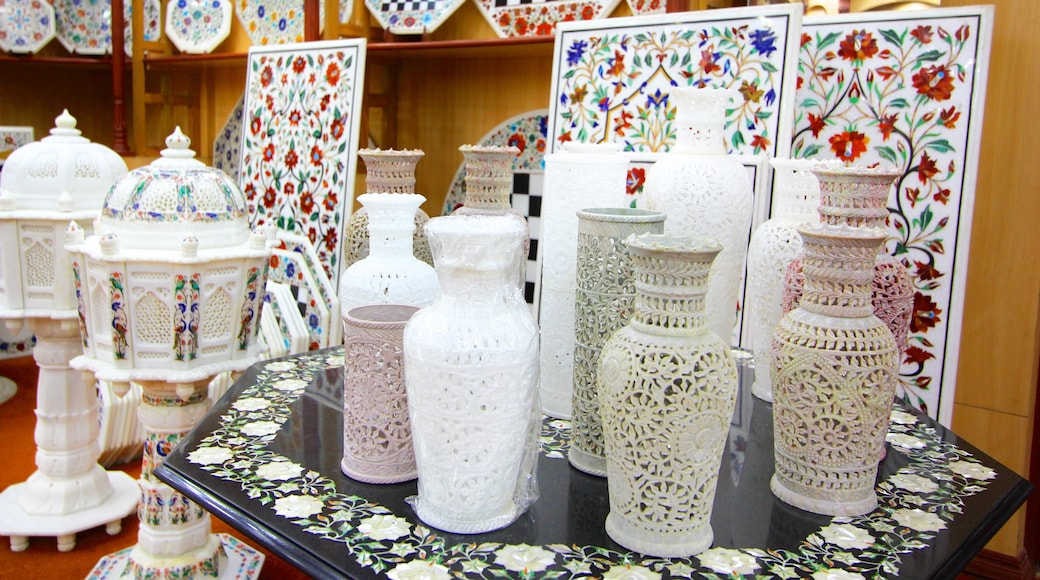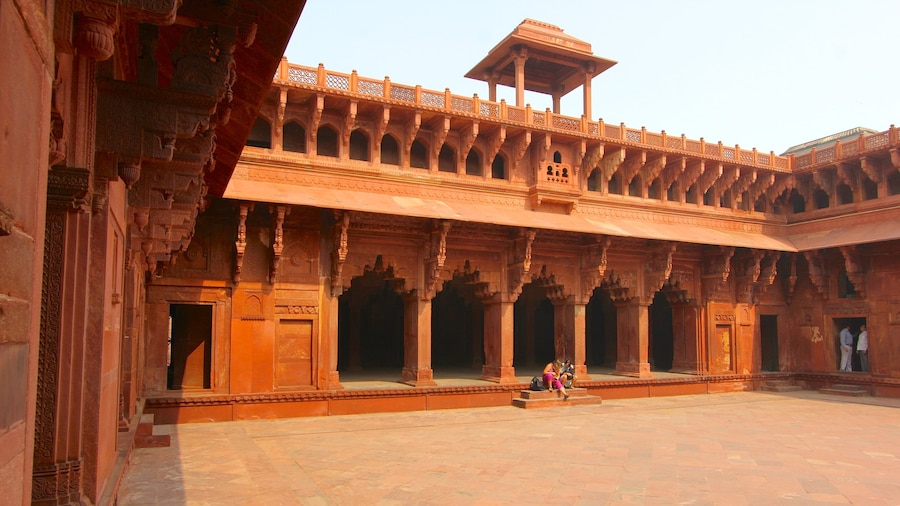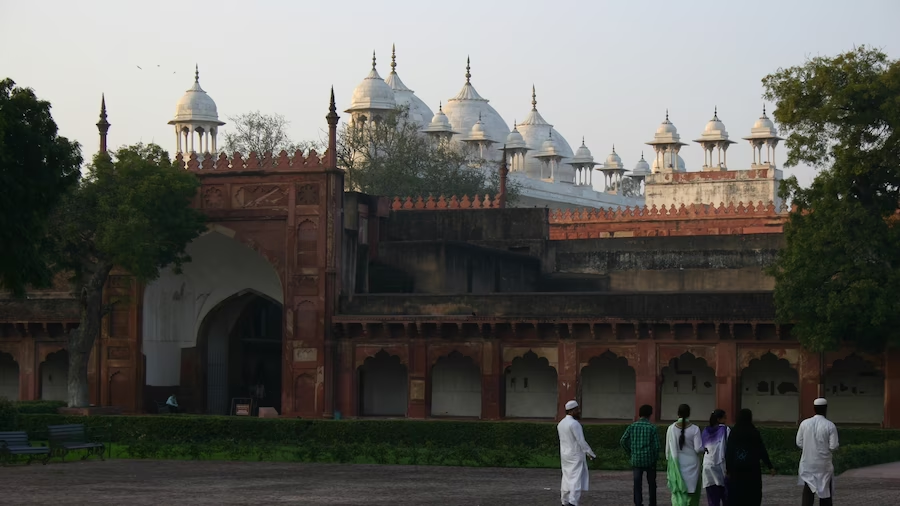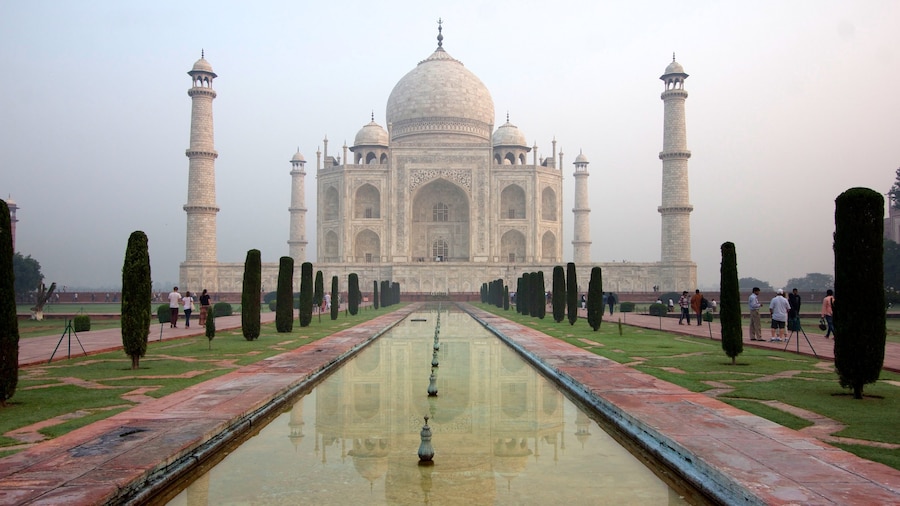After admiring the beauty of precious gems inlaid in marble at the Taj Mahal, watch artisans use generations-old inlay techniques to create stunning souvenirs.
At the Agra Marble Emporium, or Subhash Emporium, watch artisans use hand tools to create “paintings” from precious stones. The art of setting precious stones into marble was brought by master Italian stoneworkers to India for the construction of the Taj Mahal. It is known in India as Parchin Kari and was popularized by the Mughals during the 17th and 18th centuries.
This highly specialized craft was nearly lost during the chaotic years surrounding India’s battle for independence when artists had to find other livelihoods. It was resuscitated by Phool Chand Bansal, who opened the Marble Emporium in 1962. Inspired by the beautiful workmanship in the Taj Mahal, Bansal sought out and reemployed artisans skilled in Parchin Kari’s lapidary and carving techniques. Enjoy this art, once more one of Agra’s cultural attractions.
Observe artisans using hand-turned wheels to shape pieces for flowers, interlocking geometric shapes and even Taj Mahal images. Designs are then chiseled into the marble to fit the stones. It can take many days to finish just one small decorative element because of the precision this craft demands. The stones are then fitted into place in the marble and polished to a high shine.
Stunning jasper, lapis lazuli, abalone shell and many other colorful bits are combined to create incredibly detailed patterns on lamps, jewelry boxes, trays and tables of all sizes. When lit from within, the colors in the lamps are particularly stunning. Purchase souvenirs of marble statues of Indian gods, mini Taj Mahals, inlaid vases, candleholders or paperweights.
Browse the showroom or discuss a design with the staff, who make custom pieces. Don’t miss the display of designs by Bansal’s son, Umesh Chand Bansal, who was classically trained and whose artwork is renowned worldwide.
The Agra Marble Emporium is located across from the BSNL Stadium on Gwalior Road and is open seven days a week. It offers international shipping on all pieces and also runs a hotel pick-up and drop-off service for those interested in visiting.

















